So, you’re on your way to the airport on the last day of your holiday, and you twist your ankle on the cobblestones, and you are unable to put any weight on it. What do you do when the taxi drops you off at the airport?
This happened to one of my teenage children. I then discovered special assistance is there for everyone in need. Not just those with disabilities.
Who can Special Assistance help?
Special assistance is available at airports to help individuals with disabilities. Initially, it was for people with physical disabilities, but nowadays, many airports also include people with mental disabilities.
You don’t need to have a medical certificate to prove your need. It’s possible that you are elderly and can’t walk the long distance to the gate in large airports. Or you might be like my daughter and have twisted your ankle so you can’t stand on it.
Much of special assistance is geared towards those who cannot walk far, but people with sight or hearing problems can also use their help.
People with neurodivergent issues can find special assistance useful. They can be taken on a route with shorter queues and may be seated in a quieter area while waiting for their flight.
Who can’t use special assistance?
They don’t provide special assistance service for those travelling with young children unless they have a medical problem. One lady was told by her travel agent that they could get help from special assistance as she was travelling with two young children, but this was not the case.
Also, if you are a wheelchair user and under 16, you need to have an adult with you. Once I had to prove my daughter, who was wearing a leg cast, was over 16 before they would take her away in a wheelchair, and she could fly back to university in the USA.
Our first experience
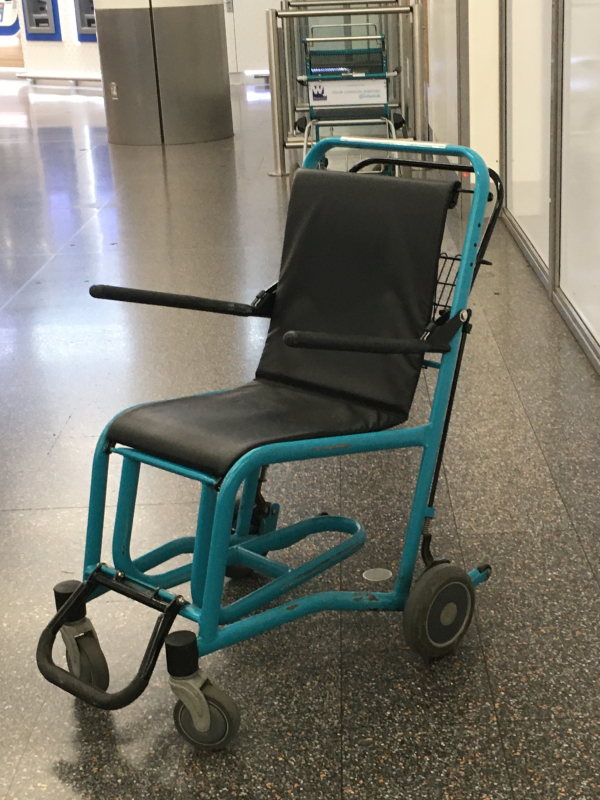
First, let me tell you about the first time we had to use special assistance. We were in Spain, and my daughter fell over and twisted her ankle at a castle. We helped her up, caught a taxi to our hotel, got our bags and then caught another taxi to the airport. My daughter’s ankle was very painful, and she couldn’t walk on it. As my daughter was a teenager and taller than me, I couldn’t carry her, nor could my husband, so I sought help from a man wearing a fluorescent jacket with the word “Assistance” on it. From that moment on, it was remarkable what happened with no preplanning.
A wheelchair was provided for my daughter, and we were whisked through check-in and security and then left sitting at the gate for 45 minutes before anyone else arrived. We were then asked if my daughter could climb the stairs onto the plane, and we said yes, she could hop up them. I don’t know if they misunderstood us or thought her hopping would slow everyone down, but she was then put on a special truck that lifted her wheelchair up onto the plane. We were travelling with a budget airline, so it wasn’t as if we received special treatment due to our seat class or anything else.
When we arrived at Gatwick Airport, someone with a wheelchair was ready to meet us. The man pushed our daughter at lightning speed, as if he was trying to beat some world record. The rest of the family raced after him, panting, with our wheeled trolleys and backpacks flying in all directions. I remember having a moment to fumble for our passports as we rode the elevator, but I was too busy to notice passport control or customs, although my family assured me we did go through them. We were then delivered to our car only 15 minutes after we landed. This is the fastest we have ever got through an airport, and Gatwick is a lot bigger than some airports we have used.
We have used special services many times due to a medical issue with one of our children and have now experienced it across the world, and the service does vary.
How to get special assistance
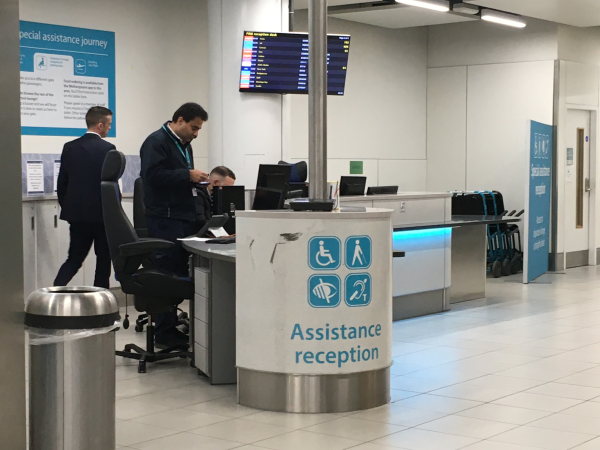
If you have a medical problem that makes travelling through the airport difficult, then you should register for special assistance at least 48 hours before your flight. This is booked via your airline, usually on the manage your booking page, but sometimes they give you an email address you have to contact. We usually register at the same time as booking the flights.
As you can see from my experience, you can just turn up at the airport. I think we were fortunate. Sometimes, there aren’t enough wheelchairs or people to push them. So always prebook if you can. You may find that if you haven’t prebooked, they can’t help you.
What special assistance do they offer?
Upon arrival at the airport, proceed to the check-in desk, if possible. If you have requested a wheelchair and need one from this point, they will notify the special assistance team.
At some airports, phones are conveniently located near the front door or car park, allowing you to call for assistance without having to walk. However, this isn’t a common feature.
Once you have checked in your luggage, there is usually a special assistance area where you can inform the special assistance team that you have arrived, and they can then assist you through security.
If you checked in online and have no bags to drop off, you can usually proceed directly to this point if you can walk a short distance without a wheelchair.
Once you have gone through security, you will be taken to a special waiting area. This is typically a room with numerous seats and several people at a desk organising everything. We did go to one that had its own café, which was great.
When your flight gate is open, someone will come and escort you, either in a wheelchair or an electric buggy, to your gate. They will then often escort you to the plane when it is ready, but not always.
If you are travelling with someone else, they might let the person who doesn’t need assistance ride in the electric buggy if they have space, but quite a few times, I have had to run behind it.
When you arrive at your destination
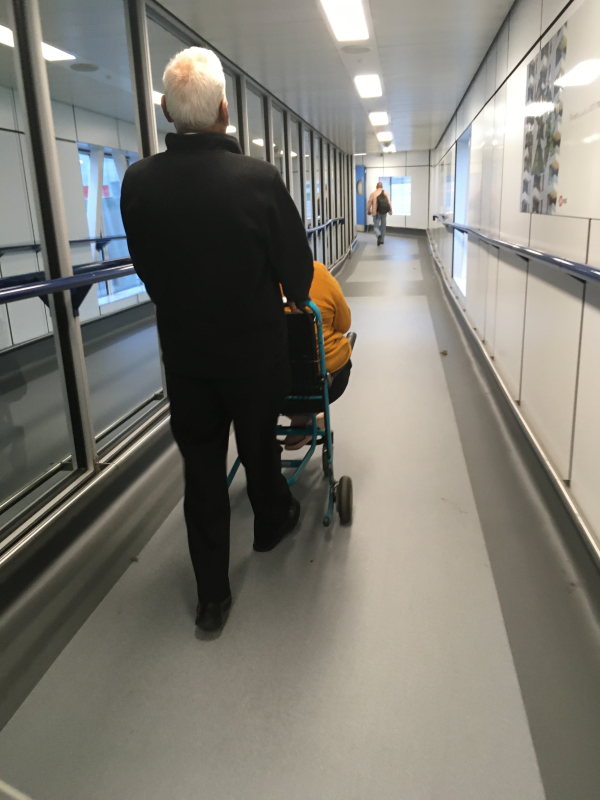
When your plane arrives at your destination, you should wait until nearly everyone has disembarked before leaving. This is because people in wheelchairs will not then get in the way of everyone else. There should be a special assistance person waiting for you just outside the plane.
Unfortunately, sometimes there is no one waiting. You might need to wait a bit longer because the special assistance person might be delayed. Once we found a phone and used it, we were lucky because the sign was in English. The other person who used special assistance when we got on the plane was elderly and didn’t speak English, so they didn’t understand she needed to wait a bit longer.
One time when nobody turned up, the British Airways crew waited with us, which I thought was very nice of them. Many other airlines are happy to leave you waiting as they dash off home.
Once, we were instructed to walk up to the electric buggy and wait inside it. It was late at night, with no one else around, and then the lights in the corridor were automatically turning off. The lady did come before it got completely dark.
Don’t use it unless you need to
I saw on television a lady saying they used special assistance every time to make life easier for them, even though they did not have a disability. They have obviously never landed at the Heathrow terminal, which has what we call the Pit of Hell.
Most special assistance services take you from the plane to the airport exit or the gate you need to reach if you are catching another flight. At some airports, you are left at a special assistance point for someone else to take you further.
At one of the Heathrow terminals, we call this place the Pit of Hell, as it is difficult to escape. As soon as we arrived the first time, others told us they had been waiting two hours to move on. The gentleman next to us was about to start a riot; he was highly frustrated with the wait. We had a taxi waiting for us, so after 30 minutes of waiting, we asked if we could push our daughter in a wheelchair ourselves rather than waiting any longer. This caused more compliments from the people waiting as they thought we were jumping the queue.
I don’t recommend pushing a wheelchair by yourself. There was a steep slope down, and then we had to cope with picking up our luggage and pushing a wheelchair. There were two of us, but as my husband is partially sighted, we had to rely on my daughter telling him if he was about to hit someone with the wheelchair.
Sometimes it is quicker using special assistance, but sometimes it takes hours longer.
Problems with special assistance
You are left on your own
If you are in a wheelchair and can’t move it yourself, you might be left alone for hours. One time, my daughter, who was travelling on her own, was left on the far side of the assistance waiting area and needed the toilet. The people around her were also in wheelchairs, so she couldn’t ask them for help.
You can’t venture away from the special assistance area.
When you are in a special assistance waiting area, you don’t know when someone will arrive to take you to the gate. We have been taken sometimes long before the gate number turns up. This means you can’t go and get a meal or spend long at the shops. At Gatwick Airport, you are provided with a pager that alerts you when it’s time to return; however, this is not a common practice at other airports. You may be able to order food from restaurants at the airport via their app on your phone and have it delivered to the special assistance waiting area. Weatherspoons will do this at Gatwick Airport.
They make mistakes
Special assistance staff are human and, like everyone, do make mistakes. In Canada, we were collected from our plane and taken to the waiting area at the next gate. We had a long stopover, and after a while, my husband went looking for food and, by chance, looked at the departure board. He realised we were waiting at the wrong gate and terminal. We then had to push our daughter to the right place. Normally, we rely on the staff to take us to the correct place, and often we haven’t a clue where we are going; we just follow the wheelchair. Wheelchair users sometimes have different routes around the airport, which are not signposted. Since that time, I have always checked our gate number.
Families split up
Sometimes they allow one person to accompany the person getting special assistance, but at other times, they are whisked away and not seen for ages. A few times, I have been waiting at the gate, and people have started to board, only to have our daughter not appear until the last moments. This is very stressful.
The Fishbowl
Special assistant waiting rooms can be in their own room or a section divided off a central room. In the Gatwick South terminal, the special assistant waiting area is in the centre of the terminal. This is not helpful for people with Neurodivergent disabilities who often prefer a quieter place. I was also told by someone who has a hidden disability that they didn’t like being in the centre as they felt like they were on show and being judged for not having a visible disability.
Sometimes you get on the plane last
In theory, people with disabilities get on the plane first as they take longer to sort themselves out. We have at times been the last people on the plane as special assistance was so late taking us to the gate. This isn’t a massive problem for us, but it has felt very rushed and stressful, and sometimes we had no time to retrieve the things we needed from our bags before we took off.
Special assistance isn’t always helpful

When we arrived at Jordon King Hussein International Airport, we were taken off the plane by a lift. There were an elderly couple with us; the gentleman was in a wheelchair. The wheelchairs were wheeled into the main building, but the elderly woman was left behind to carry four bags and two walking sticks. We helped her carry the bags. We all filled out our immigration forms, went through passport control and picked up our bags. The man in the wheelchair was taken away again, leaving the elderly woman with all the suitcases. By now, she was getting very distressed and upset. She couldn’t carry two suitcases plus bags and had no idea where they had taken her husband. Again, we helped her. I then looked for my daughter. She was last seen in a wheelchair being pushed towards the exit.
I rushed out of the airport; it was dark, and all I could see were strange men all around, staring. I then saw a man walking back towards the airport with a wheelchair. I dashed around the corner, and there was my daughter sitting on a bench. I was very pleased to see she hadn’t been whisked away.
Some special assistance are invaluable, but others aren’t that helpful.
They don’t always take you to the exit
We have used special assistance where they have taken us from the plane right to the taxi door. But at other times, they have taken us only as far as baggage claim. Maybe they think it isn’t far to walk from there.
On our last holiday, I tore the muscle at the back of my leg while at the destination airport. Back in the UK, I did manage to get a lift to the baggage claim hall, but after that, everyone on the electric buggy was expected to walk. Have you ever tried limping and pulling a suitcase? I couldn’t manage it. We tried to get a trolley for the suitcases so my husband could take them all, but we had no coins. In the end, Special Services provided us with a trolley, and I limped off after my husband.
If you are unable to walk far, please make this is clear when submitting your request. Alternatively, you could consider hiring a courier service to deliver your suitcases directly to your hotel.
It takes a long time
I have already told you that special assistance can take a long time, but one time it took my husband four hours to get out of the airport. This was when he was picking up our daughter in a wheelchair, and because they were getting a train home, they had to wait two hours for a person to push our daughter onto the platform. My husband wasn’t allowed to. She had already had two different people pushing her through various airport sections.
Sometimes the special assistance is brilliant
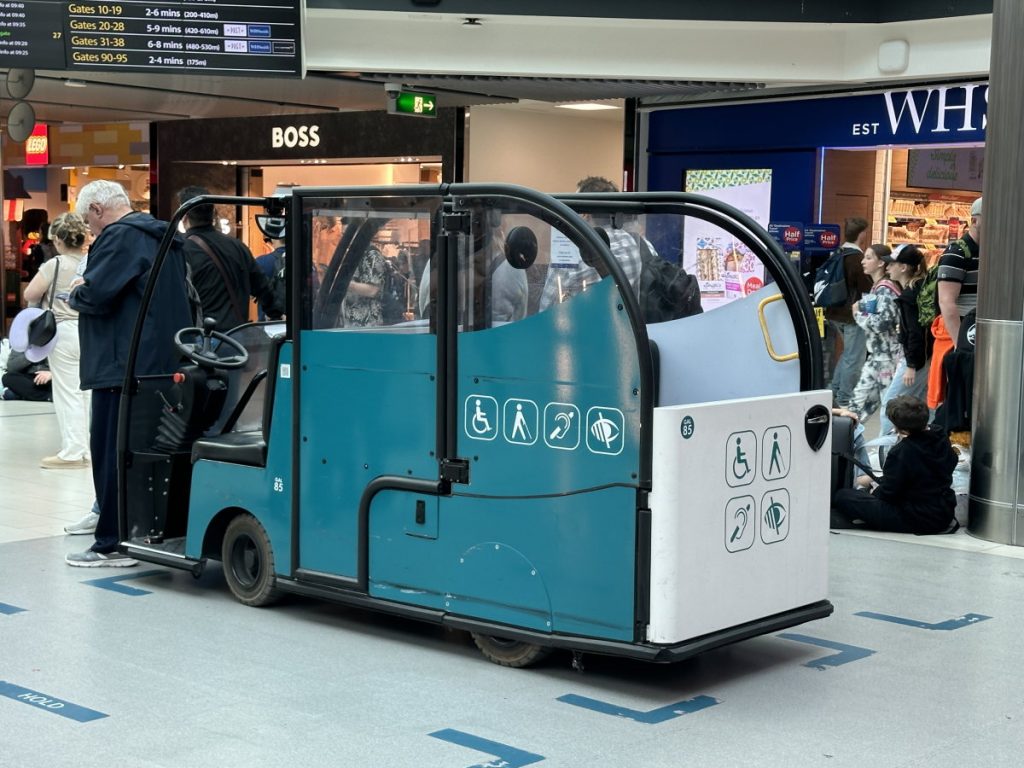
Having mentioned all the problems we have had with special assistance, I must tell you that some are brilliant. One man stands out. We had a stopover in Dubai, and our first plane was delayed by two hours, so we only had 30 minutes to catch the next plane. Of course, our gate was the farthest away and located in a different terminal building. The man pushing the wheelchair said he would do his best. He was in his fifties, and he ran up and down slopes pushing the wheelchair.
We were all puffing away. I did wonder if I would have a heart attack as I was running so hard. We managed to catch the plane, and the special assistant informed them that we were on our way, keeping them updated on our progress. As a result, they kept the door open for us. The special assistance man looked hot and sweaty and was out of breath when we arrived at our gate. But thanks to him, we were able to catch the plane.
Tips when using special assistance
Carry your own passports
Usually, my husband carries all the family’s passports. However, the person requiring special assistance will need to have their passport with them or provide it to the special assistance person. One time, my husband was accompanying one child in an electric buggy while I walked down the stairs with the other. Unfortunately, I got stuck because I needed my passports.
Have some food with you
If you’re travelling alone, consider bringing some extra food, as you may not be able to access any restaurants or food shops. Sometimes a special assistant will take you to buy food, but often they don’t have much time to help.
Wear a sunflower lanyard
If you have a hidden disability, then wear a sunflower lanyard. These can be obtained from the airport. In the UK, major supermarkets also have them if you ask at customer services. The lanyard indicates that you have a hidden disability and may require additional support.
Check with special assistance beforehand
If you have any concerns, check with special assistance before you travel; they can offer a lot of help. Some airports offer special tours for children with autism or provide guidance on where to find a quiet room. If you are clear what your needs are, they will try to meet them if at all possible.
Special assistance varies across the world
Don’t expect the same service everywhere. Some airports don’t offer special services, but they are usually smaller airports where you don’t have to walk as far and are quieter. In some places, if you require special services, you must find a special assistance phone to call for help. Sometimes there is minimal service in the evening.
Wheelchairs can be smaller in countries where the population are smaller.
Neurodivergent issues aren’t recognised everywhere. It is best to determine what you need and request those requirements, such as a quiet area.
Keep things simple. If you start explaining all the problems the person needing special assistance has, they might not let you on the plane. In some countries, they don’t have a deep understanding of disabilities and have limited knowledge beyond the basics.
Summery
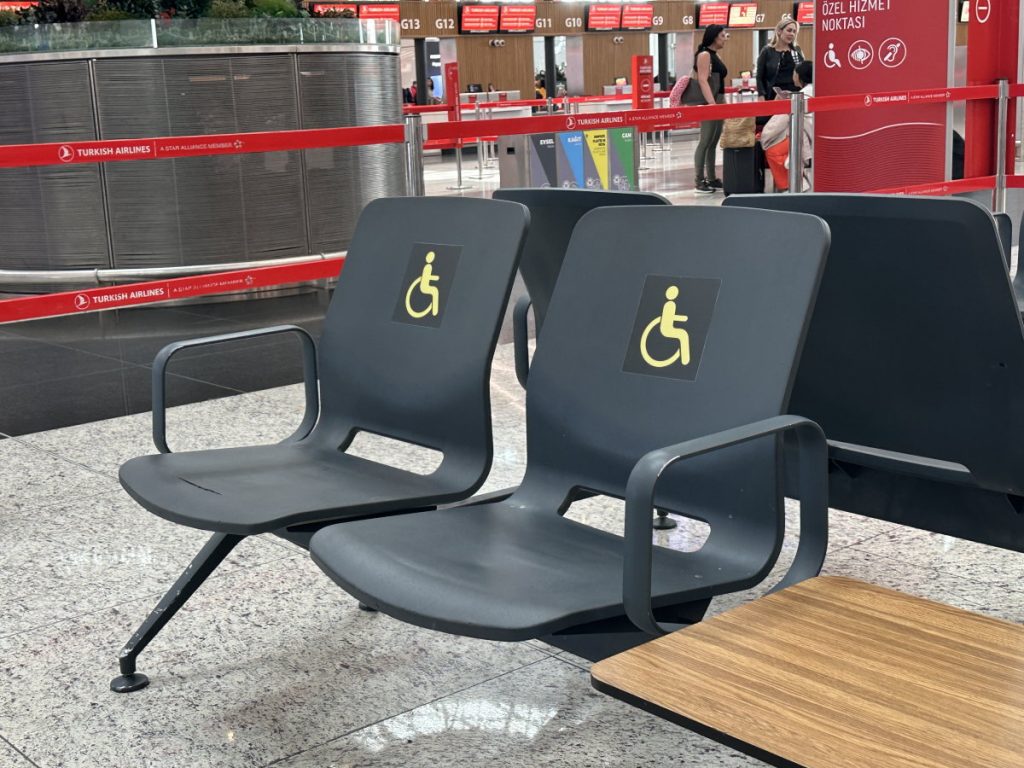
Special assistance does a great job. Without them, we wouldn’t have been able to take our daughter on holiday. I want to thank them for the assistance they have provided us over the years.
Certain countries have a large number of people requesting special assistance. Once I was told there were over 20 people on one plane. If you don’t need it, please don’t request it. Special assistance staff work extremely hard, and they aren’t there for those who don’t like walking or want to be escorted through the airport.
If you need them, they are there for you. They are there to make your holiday possible and take the worry away. They are for those who can’t walk far or get stressed by large crowds; whatever your difficulty may be, they will try to help.
Enjoy your holiday; special assistance will be available to you at the airport.
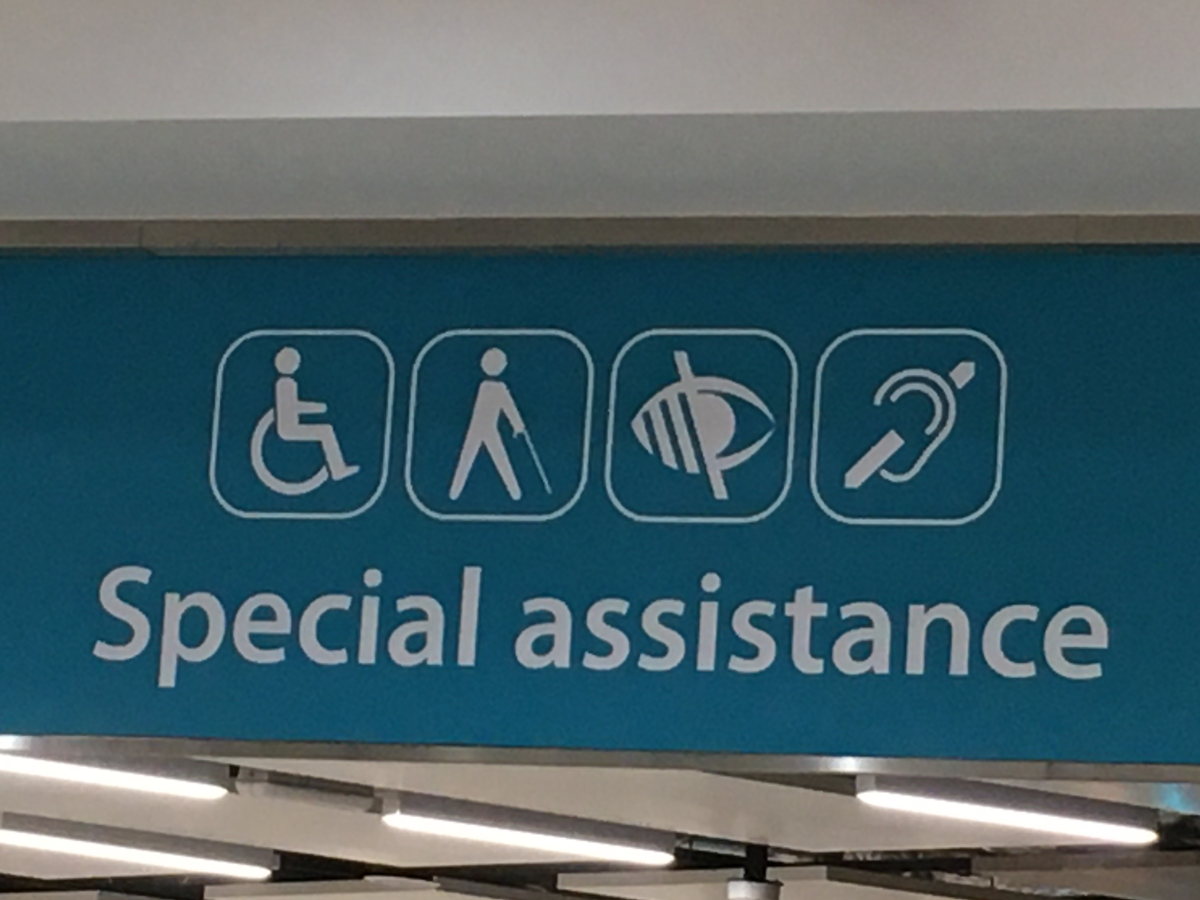
Leave a Reply